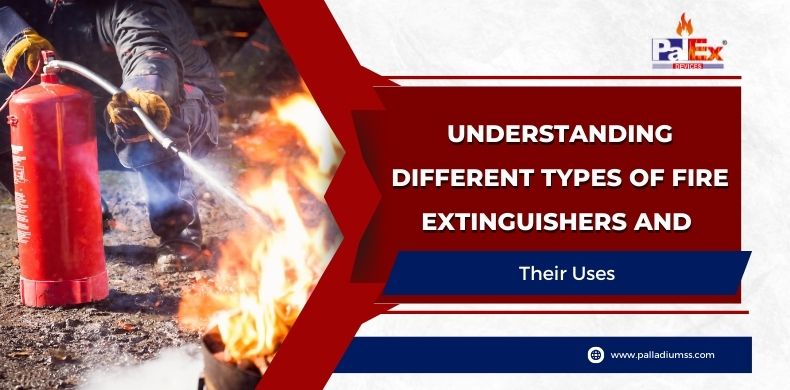Fire extinguishers are really important safety tools that help you prevent small fires from turning into dangerous disasters. But not all the fires are the same and using the wrong extinguisher can be ineffective or even make the situation worse. In this guide you can learn everything about different types of fire extinguishers and their uses.
Understanding fire classifications
Before discussing fire extinguishers it is very important for you to understand the different types of fires. Fires are basically categorized into different classes based on the materials which are burning. Each class requires a specific type of extinguisher.
- Class A is ordinary combustibles. It includes wood, paper , cloth , rubber and plastics. You can generally find it in homes, offices and workspaces. Best extinguished using water based or foam extinguishers.
- Class B is flammable liquids which include gasoline oil, grease paints and solvents. It is basically used in garages, workshops and industrial areas. It requires dry chemical or carbon dioxide extinguishers.
- Electrical fires are Class C. It basically includes electrical equipment like appliances wiring and circuit Breakers. You can generally find it in homes, offices and factories. It needs carbon dioxide or dry chemical extinguishers as water based extinguishers can cause electrocution.
- Class D is flammable metals. It includes magnesium titanium sodium and potassium. It is generally found in laboratories and industrial areas. It requires special fire extinguishers with dry powder agents.
- Class K includes cooking oils and fats. It basically includes vegetable oils and animal pattern grease. You can generally find it in kitchens and restaurants. Class K wet chemical extinguishers are required that are cool and smother the fire.
Each fire classification requires a specific type of extinguisher so it is important for you to choose the right one based on the potential hazard in your area.
Different types of fire extinguishers and their users
There are different types of fire extinguishers designed for specific kinds of files.
- Water based fire extinguishers are truly your best bet for fires involving wood paper and cloth. It uses water to cool the flames. You should not use it on electrical or flammable liquid fires. It is very important for you to avoid using a water extension or electrical or oil fire which can cause electrocution or spread fire.
- Foam fire extinguishers are best for fires including wood paper cloth and flammable liquids. It creates a foam blanket that cools the fire and also prevents oxygen from reaching it. You should not use it on electrical or metal fires.
- Dry chemical fire extinguishers are perfect for fires involving wood flammable liquids and electrical fires. It uses a fine powder to smother the fire and stop it from spreading. You should not use it on metal fires. They are some of the most commonly used fire extinguishers and are effective in many different fire situations.
- Carbon dioxide fire extinguishers are best for fires including flammable liquids and electrical equipment. It releases carbon dioxide gas which displaces oxygen and also smothers the fire. You should not use it on wood paper or fabric fires as the fire might reignite.Carbon dioxide extinguishers are widely used in computer rooms, server rooms and electrical workshops.
- Wet chemical fire extinguishers basically it’s best for fires involving cooking oils and fats . it releases a chemical mixture and prevents recognition. you should not use it on electrical fires or metal fires. The extinguishers are mostly used in kitchens and restaurants.
How to use a fire extinguisher properly?
Knowing how to use a fire extinguisher is really important. You must pull the pin to unlock the extinguisher and aim the nozzle at the base of the fire. Just squeeze the handle to release the extinguishing agent. You can sweep from the side to side until the fire is completely out. You must always stand 6 to 8 feet away from the fire when using an extinguisher. Call emergency services if the fire is too big. Evacuate immediately if you cannot control the fire.
Safety tips to prevent fire
You must install smoke alarms in key areas and check them regularly and never leave cooking unattended in the kitchen. Check electrical cords for damage and avoid overloading outlets.
So above all you need to know that understanding the different types of fire extinguishers and the users can save a lot of lives and even property damage. Whether at home work or in public space knowing how to choose those and maintain a fire extinguisher is really important for your safety.



